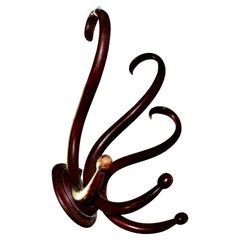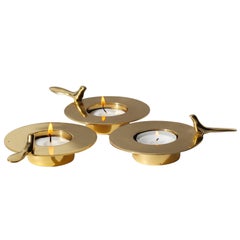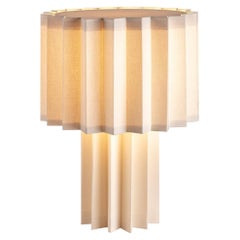Marcel Duchamp Hat Rack
Early 20th Century French Modern Mobiles and Kinetic Sculptures
Wood
People Also Browsed
2010s Indian Organic Modern More Candle Holders
Brass
21st Century and Contemporary Swedish Mid-Century Modern Table Lamps
Textile
Vintage 1950s Swedish Scandinavian Modern Floor Lamps
Aluminum, Brass
Antique 19th Century British Victorian Bird Cages
Brass
20th Century Chinese Chinese Export Paintings and Screens
Brass
Vintage 1940s Bird Cages
Brass
Mid-20th Century Chinese Decorative Bowls
Brass, Enamel
Vintage 1920s Bird Cages
Brass
20th Century Mid-Century Modern Planters, Cachepots and Jardinières
Brass
20th Century Japanese Vases
Brass
Vintage 1930s French Art Deco Vanities
Glass, Hardwood
1960s Surrealist Figurative Prints
Board, Lenticular, Plastic, Mixed Media, Pencil
Vintage 1970s French Space Age Architectural Elements
Metal, Aluminum
Marcel Duchamp for sale on 1stDibs
Marcel Duchamp was a French artist whose work is most often associated with the Dadaist and Surrealist movements. His output influenced the development of post-World War I Western art. Duchamp advised modern art collectors such as Peggy Guggenheim and other prominent figures, thereby helping to shape the tastes of Western art during this period.
A playful man, Duchamp challenged conventional thought about artistic processes and art marketing, not so much by writing but through subversive actions such as dubbing a urinal "art" and naming it Fountain. He produced relatively few artworks, while moving quickly through the avant-garde circles of his time.
“All in all, the creative act is not performed by the artist alone; the spectator brings the work in contact with the external world by deciphering and interpreting its inner qualifications and thus adds his contribution to the creative act,” said Duchamp.
Born on July 28, 1887, in Blainville, brother of the artist Raymond Duchamp-Villon and the painter Jacques Villon, Duchamp began to paint in 1908. After producing several canvases in the current mode of Fauvism, he turned toward experimentation and the avant-garde, producing his most famous work, Nude Descending a Staircase (No. 2) in 1912. Portraying continuous movement through a chain of overlapping Cubistic figures, the painting caused a furor at New York City's famous “Armory Show” in 1913.
Duchamp painted very little after 1915, although he continued until 1923 to work on his masterpiece, The Bride Stripped Bare by Her Bachelors, Even, an abstract work, also known as The Large Glass — composed in oil and wire on glass — that was enthusiastically received by the Surrealists.
In sculpture, Duchamp pioneered two of the main innovations of the 20th-century kinetic art and ready-made art. His "ready-mades" consisted simply of everyday objects, such as a urinal and a bottle rack. His Bicycle Wheel, an early example of kinetic art, was mounted on a kitchen stool.
After his short creative period, Duchamp was content to let others develop the themes he had originated; his pervasive influence was crucial to the development of Surrealism, Dada and Pop art.
Duchamp became an American citizen in 1955. He died in Paris on October 1, 1968.
Find a collection of authentic Marcel Duchamp prints, photography and other art on 1stDibs.
(Biography provided by David Barnett Gallery)
A Close Look at Modern Furniture
The late 19th and early 20th centuries saw sweeping social change and major scientific advances — both of which contributed to a new aesthetic: modernism. Rejecting the rigidity of Victorian artistic conventions, modernists sought a new means of expression. References to the natural world and ornate classical embellishments gave way to the sleek simplicity of the Machine Age. Architect Philip Johnson characterized the hallmarks of modernism as “machine-like simplicity, smoothness or surface [and] avoidance of ornament.”
Early practitioners of modernist design include the De Stijl (“The Style”) group, founded in the Netherlands in 1917, and the Bauhaus School, founded two years later in Germany.
Followers of both groups produced sleek, spare designs — many of which became icons of daily life in the 20th century. The modernists rejected both natural and historical references and relied primarily on industrial materials such as metal, glass, plywood, and, later, plastics. While Bauhaus principals Marcel Breuer and Ludwig Mies van der Rohe created furniture from mass-produced, chrome-plated steel, American visionaries like Charles and Ray Eames worked in materials as novel as molded plywood and fiberglass. Today, Breuer’s Wassily chair, Mies van der Rohe’s Barcelona chair — crafted with his romantic partner, designer Lilly Reich — and the Eames lounge chair are emblems of progressive design and vintage originals are prized cornerstones of collections.
It’s difficult to overstate the influence that modernism continues to wield over designers and architects — and equally difficult to overstate how revolutionary it was when it first appeared a century ago. But because modernist furniture designs are so simple, they can blend in seamlessly with just about any type of décor. Don’t overlook them.
Finding the Right sculptures for You
Styling your home with vintage, new and antique sculptures means adding a touch that can meaningfully transform the space. By introducing a sculptural work as a decorative finish to any interior, you’re making a statement, whether you tend toward the dramatic or prefer to keep things casual with modest, understated art.
A single, one-of-a-kind three-dimensional figurative sculpture mounted on your dining room wall is a guaranteed conversation piece, while a trio of abstract works arranged on your living room bookshelves can add spontaneity to the collection of first-edition novels or artist monographs you’re displaying as well as draw attention to them. Figurative sculptures are representational works that portray a specific person, animal or object. And while decorating with busts, which are sculpted or cast figurative works, hasn’t exactly topped the list of design trends every year, busts are back. According to designer Timothy Corrigan, “They give humanity in a way that a more abstract sculpture can’t give.” Abstract sculptures, on the other hand, are not meant to show something specific. Instead, they invoke a mood or scene without directly stating what they are portraying.
Busts made of stone or metal may not seem like a good fit for your existing decor. Fortunately, there are many ways for a seemingly incongruous piece to fit in with the rest of your room’s theme. You can embrace a dramatic piece by making it the focal point of the room, or you can choose to incorporate several elements made out of the same material to create harmony in your space. If an antique or more dramatic piece doesn’t feel like you, why not opt for works comprising plastic, fiberglass or other more modern materials?
When incorporating sculpture into the design of your home — be it the playful work of auction hero and multimedia visionary KAWS, contemporary fiber art from Connecticut dealer browngrotta arts or still-life sculpture on a budget — consider proper lighting, which can bring out the distinctive aspects of your piece that deserve attention. And make sure you know how the size and form of the sculpture will affect your space in whole. If you choose a sculpture with dramatic design elements, such as sharp angles or bright colors, for example, try to better integrate this new addition by echoing those elements in the rest of your room’s design.
Get started on decorating with sculpture now — find figurative sculptures, animal sculptures and more on 1stDibs today.


